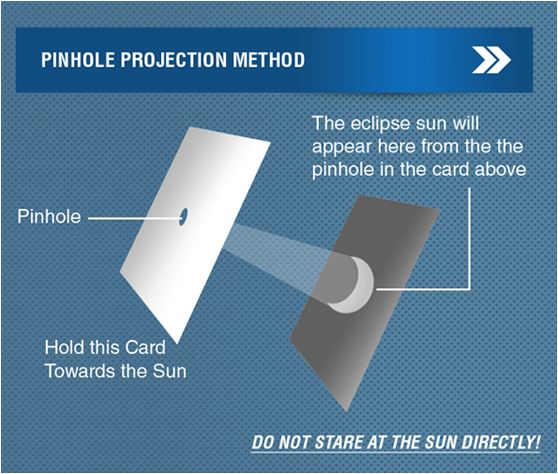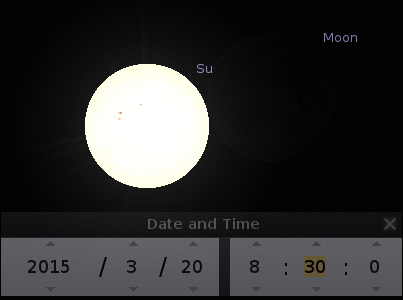There will be a partial solar eclipse on Friday 20 March 2015. A solar eclipse is when the Moon moves in front of the Sun and blocks out its light. A total eclipse is where the entire bright disk of the Sun (called the photosphere) is covered. By a strange coincidence of nature, both the Moon and the Sun are about the same angular size as viewed from the Earth - about half a degree, or a thumbnail at arm's length. This means that total solar eclipses are rare and brief, and visible from only a small area of the Earth's surface. Partial eclipses will be visible across a larger area of the Earth's surface and are slightly less rare.
Although Friday's eclipse is only partial in the UK, it will be covering around 90% of the photosphere across most of the UK. In Glasgow, where I live, it will be around 95% at maximum, but that 5% of photosphere still emits a lot of light, enough to damage your eyes, so let me issue the standard but important warning:
DO NOT LOOK DIRECTLY AT THE SUN AND DO NOT VIEW IT THROUGH BINOCULARS OR A TELESCOPE UNLESS YOU'RE ABSOLUTELY CERTAIN THAT A PROPERLY RATED SOLAR FILTER IS IN PLACE. PERMANENT EYE DAMAGE MAY RESULT!!!
There's a dramatic difference between even a 95% partial eclipse and a 100% or total eclipse, which is why a total eclipse makes for a very different experience. I saw the 1999 total eclipse from Alderney in the channel islands and I wasn't alone in finding it a primal and emotional experience. A partial eclipse may not be as intense as that, but it's still a rare and interesting phenomenon.
How to see it?
I plan to use a pin-hole camera. It's so simple. Just take a piece of card and a make a small hole it. The hole doesn't need to be pin-sized, even a few mm will work, but the smaller it is, the sharper the image will be. Don't look through the pin hole but hold it so that light passes through it to project an image of the Sun - see below. It may be low tech, but it'll do the job reliably and let you see the circle of the Sun being "eaten" by the Moon (and then vomited back up).
See http://www.solareclipse2015.org.uk for more details.
When and where to see it?
I've consulted some astronomy websites and the excellent Free and Open Source planetarium software Stellarium, and have constructed this table showing the timings and azimuth and altitude of the Sun for where I am in Glasgow. Go to http://www.timeanddate.com/eclipse if you want to get the exact timings for your location.
| Phase | Time (UTC) | Azimuth | Altitude |
|---|---|---|---|
| Begins | 08:30 | 117° | 17° |
| Max | 09:34 | 132° | 24° |
| Ends | 10:43 | 150° | 30° |
I should explain a few things. UTC is the same as UT or Greenwich Mean Time (GMT) and is the time that clocks will show in the UK until the clocks go forward. Azimuth is just compass bearing measured east of north, so 90° is due east and 180° is due south, so the Sun will be to the southeast (but starts closer to east) throughout the eclipse. The altitude is the angle measured from the horizon, so 0° is on the horizon and 90° is at the zenith, i.e. straight up. When the eclipse starts the Sun's altitude will be 17°, rising to 30° by the end. If you want to check whether you've got a clear view of that part of the sky before Friday, hold your hand with fingers apart at arm's length and from the tip of your thumb to the end of your pinky will span about 15° (Beware of this rule of thumb if you have abnormally sized limbs!)
I put together this brief movie using Stellarium to illustrate what the eclipse will look like from Glasgow, 30 metres above sea-level.
Please excuse the arty-farty lens-flare effect - that isn't something you will see.
Here's hoping for clear skies!

